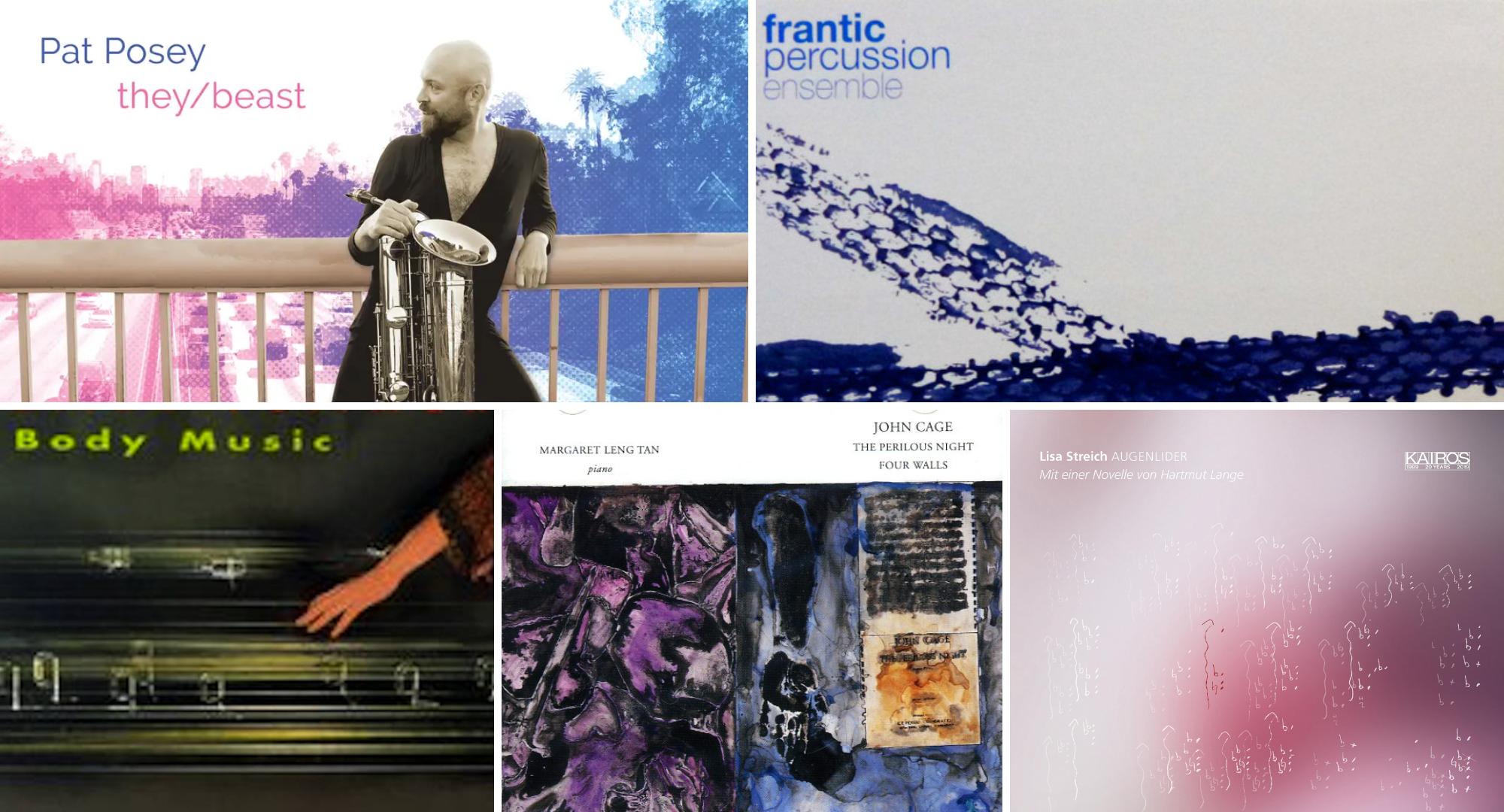This week’s playlist is music for rare and prepared instruments. A prepared instrument is where you put stuff in or on an instrument to alter its sound. Threading aluminum foil through harp strings makes it rattle and placing a brick wrapped in a towel on piano strings acts as a mute. This practice is almost 100 years old and truly has endless possibilities. The rare instruments on this playlist are the Tubax and the Long String Instrument.
To make sure these playlists delivered to your inbox every week, sign up for my newsletter.
I give this playlist a Difficult Listening Hour rating of 7.5/10.
1. MO’INGUS by Shelley Washington performed by Pat Posey. Album: they/beast. This piece is written for the Tubax which is “a reproportioned contrabass saxophone developed in the late 1990s by the instrument maker Benedikt Eppelsheim.”
2. Concerto for Prepared Piano and Percussion, Part V by Eric Griswold performed by the Frantic Percussion Ensemble. Album: WHEELED. “Erik Griswold is a composer and pianist working in contemporary classical, improvised, and experimental forms. Particular interests include prepared piano, percussion, environmental music, and music of Sichuan province. Originally from San Diego, and now residing in Brisbane, he composes for adventurous musicians, performs as a soloist and in Clocked Out, and collaborates with musicians, artists, dancers, and poets.”
3. Command Voices – 251a by The Honourable Elizabeth A. Baker. Album: Quadrivium. From the creator, “In patients with psychosis, command voices are the ones that instruct them to do destructive things or behave in a certain manner. I am intensely fascinated with the relationship between a musician and their instrument as a secondary self, and the implied consciousness of an inanimate object. […] A vibrator presents a more accurate depiction of a command voice in a psychotic patient, while I may be able to control one or two of them in manipulating the sound of the piano, as I add more of them, I lose control… specific pitches and the resulting resonant tones are left to chance. In this way, the instrument is coming alive in a manner that removes my authoritative energy, and my conversation with the instrument inevitably must fundamentally change. Furthermore, vibrators in piano create a certain underlying chaos; as I begin to interact with the instrument in a traditional manner (playing the keys) I am acting as a dominant command voice, but on a deeper level because of the subtlety of the resonant voices underneath, I am also, presenting the public face of my instrument. We all have noise in our heads, it may manifest as non-command voices, but an inner dialogue is always present; however, we don’t go around sharing our inner thoughts all the time, we have a mask… in this relationship, I am the piano’s mask, which conceptually obliterates the conventional relationship between musician and instrument.”
4. Silenzio – For prepared harp by Simone Spagnolo performed by Clara Gatti Comini. Album: Gymnopédie, Tableaux, Silence. “Silenzio’s preparation features some foil paper wrapped around two strings and three small bells hanging from the instrument’s frame…”
5-10. The Perilous Night by John Cage performed by Margaret Leng Tan. Album: The Perilous Night/Four Walls. Liner notes, “”The Perilous Night” was written for the prepared piano, John Cage’s now classic invention from the late 1930’s, where various objects inserted between the strings of a grand piano act as mutes which completely transform the timbral characteristics of the instrument. “The Perilous Night”, one of Cage’s more complex preparations, calls for a piano to be heavily muted with materials ranging from the standard bolts, nuts and weather stripping to bamboo slivers.”
11. Bass Song by Ellen Fullman. Album: Body Music. “Body Music is music for Ellen Fullman’s unique Long String Instrument, an eighty-foot long instrument with approximately eighty strings. When she started making the Long String Instrument, she saw it as “sculpture as music;” now she has come full circle in conceiving “music as sculpture.” For the most part, the music in Body Music relies harmonically on the diatonic scale. Because of the prominence of overtone content, more complex harmony is suggested. Through her studies of extended harmony, Fullman has come to realize that harmony is “dimensional.”
12. Studies 13-32: Study No. 25 by Colon Nancarrow. Album: Studies for Player Piano Vol. 2. From Wikipedia, “Nancarrow was an American-Mexican composer who lived and worked in Mexico for most of his life. Nancarrow is best remembered for his Studies for Player Piano, being one of the first composers to use auto-playing musical instruments, realizing their potential to play far beyond human performance ability.”
13. Sturnus Vulgaris Cohabitus by Justina Repečkaitė performed by Marta Finkelštein. Album: 88+. From the composer’s bio, “After completing her Master’s degree in composition in France, she studied at the prestigious Cursus IRCAM. In Paris, Justina Repečkaitė (b.1989) was an artist in residence at the Singer-Polignac Foundation, composer in residence with the ensemble Le Balcon (cond. Maxime Pascal) and held a scholarship at the International Centre of Nadia and Lili Boulanger. Later in Germany, she was an artist-in-residence at Villa Waldberta and at Schloss Wiepersdorf. In 2024, she was a composer-in-residence at the Cordes-sur-Ciel festival, and in 2025, artist-in-residence at the Lehtinen Foundation in Helsinki.”
14. Phases for Prepared Cellos by Jason T. Ingram Album: Phases For Prepared Pianos, Playground Instruments, and Prepared Cellos. From the composer, “Produced in 2019, this project layers up to a dozen cello tracks at once, using a phasing process inspired by American composer, Steve Reich, however with phases that last several seconds, some roughly a minute in length, as opposed to the Reich process, which is typically under ten seconds”
15. Timber: Part III by Michael Gordon performed by Slagerk Den Haag. Album: Timber. From the liner notes, “Timber, is scored for six wooden 2x4s, each cut into different sizes, giving each one a slightly different pitch. Called a “simantra”, this percussion instrument was first devised by composer Iannis Xenakis. Far from a gimmick, the instrumentation allows Gordon to create the impression that the sound is traveling around and through the room by subtly shifting the accent of sound from one player to another. The result is a meditation on sound and rhythm, bringing the physicality, endurance and technique of percussion performance to a new level.
credits”
16. Augenlider (2015) for prepared guitar and Orchestra by Lisa Streich performed by Laura Snowden and the Deutsches Symphonie-Orchester Berlin. Album: Lisa Streich: Augenlider. “Preparation of the guitar features an egg slicer and hair clips.”

